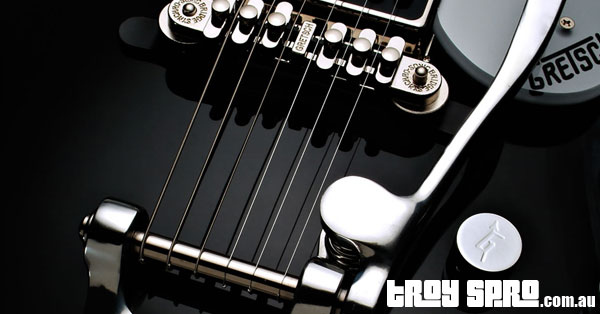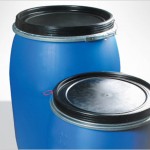Here I’ll try and explain to you the different types of guitars.
The Electric Guitar is a solid body or hollow body guitar that uses a pick up on the bridge to convert the vibration of its strings when played into electrical impulses (Through electromagnetic induction), then this electrical impulse, is amplified before sending it to a speaker.
Sounds quite technical doesn’t it, but this is the general run down of how your electric guitar works post you picking a string.
During the early days of amplification, transmitters were used to amplify the sounds made by violins and banjos, this formed the foundation of what was to be the modern guitar pick up.
During the time period of 1920’s and the 1930’s there was many people experimenting with electric instruments and so there is many claims of the first person to have invented the electric guitar.
The electric guitar was generally designed and manufactured by the guitar makers and manufacturers of the day, Les Paul was experimenting with microphones attached to guitars but the first electronically amplified guitar was designed by George Beauchamp who was the General Manager at National Guitar Corporation in 1931.
In 1932 the electric guitar made by the company above was in commercial production and by 1934 the company’s name, which was Ro Pat In was changed to Rickenbacker named after one half of the partnership Adolph Rickenbacker.
As demand grew for the electric guitar through the Big Bang era, so did the company’s manufacturing electric guitars, at this time there was Rickenbacker, Dobro, National, AudioVox, Volu-tone, Vega, Epiphone, Gibson and many others.
Pretty much during the 1930’s was when lots of company’s were experimenting and releasing various types of electric guitars, solid bodies, hollow body’s, spanish guitars with lots of different types of pickups and microphones using different materials and set ups.
Since this time many companies have come and gone but the fundamentals of the electric guitar has stayed the same, you still take a noise from one place, transport it electronically to another place and the amplify, hopefully this sound at the end is in tune and sounds great.
Also in the variations of the electric guitar, we have had the double neck, triple neck and quad neck guitars, 1 string, 2 string, 4 string, 6 string, 7 string, 9 string guitars and every other string inbetween too, whammy bar years, string locking systems to prevent out of tune strings while performing lots of whammy dive bombs and also over the last decades the shapes, sizes of the body’s and necks have been full on and also the art work on some guitars have been nothing short of masterpieces, take into the account of all the different tunings too that have come and gone with different genres of music you have alot to learn and read and learn about.
Parts of the Electric Guitar ::
The electric guitar has so many variations these days of timber, shape of the body, neck configuration, different bridges, pickups etc that I’ll run through a few here but not go into it in depth as I don’t want to put you to sleep.
The basic parts still remain the same on most electric guitars, headstock, machine heads, frets, neck, truss rod, fretboard, pickups (Neck and Bridge), tail piece assembly, guitar strings, control knobs, bridge, strap buttons, saddles, guitar body, output jack, pickup selector switch (If needed), whammy bar / tremolo arm (On some models), all these parts make up most of the modern day electric guitar.
The body of an Electric Guitar ::
The bodies of most Electric Guitars are made of wood, although there have been a few graphite guitars and also a Perspex see through guitar I can remember seeing over the years, using different construction materials usually means a change in tone and sound of the guitar.
There is solid body and hollow body electric guitars, generally there are only a few woods that are used, and these include alder, swamp ash, mahogany, basswood, poplar, plywood, pine and maple.
Generally you get what you pay for with guitars and when the price goes up it means the wood quality used in the construction of the electric is a lot better quality and more often than not you will get a better tone and quality sound produced by the electric guitar too.
The neck of an Electric Guitar ::
The neck of the electric guitar is the long skinny part that is between the headstock where your tuning keys are and the body of the guitar, it is where you place your fingers and push down on the strings to create the sound out of the electric, this is in very layman terms obviously, but if you don’t know, you don’t know.
Your frets are on the neck of your electric guitar, the frets act as a simple guide for you to place your fingers on specific notes either to make chords or single notes depending on what you are playing at the time.
When you play your electric, place your fingers on the neck inbetween each fret on the fingerboard, when you do this you are changing the length of the string and therefore the tone of the note being played is changed too.
Fingerboards have gone through a few phases over the years too, these range from nearly flat, concave, scalloped and arched fingerboards, again this comes down to manufacturer and also, if you are buying an electric guitar, personal preference, the fret heights and also the manufacturing material of the fret wire can vary.
The neck on a typical electric guitar has 21 to 24 frets and most have marker dots on the neck inbetween the frets, these are usually placed at the 3, 5, 7, 9 and 12th fret with double dots to show the octave point, sometimes these dots are reciprocated on the side of the neck too, this is so you can easily know where you are on the neck when you are playing, there also, over the years have been LED lights installed in electric guitars as the fret markers/dots, which look great when playing live, also great if you are on a dark stage too.
There are various types of neck shapes too, C necks, U necks and V necks, these refer to the cross sectional shape of the neck and you can definitely feel the difference when you pick up the guitar and start playing, different manufacturers usually have different neck shapes, like my Fender has a more clubbier feel than one of my old metal years electrics which generally have a thin different shape neck and are built for speed.
Most necks are bolt on, set in or neck through in design and contain a truss rod that can be adjusted to stop fret buzz and string height etc, some are glued on to the body, it depends on the manufacturer, again all these little things can change the sound of your electric guitar.
The wood used on the neck of electric guitars vary a lot too, the wood that is generally used includes maple, mahogany and ash, the neck and the fingerboard maybe made with different types of timber too, the standard for these types of electrics is the maple neck with a rosewood fingerboard.
The head of an Electric Guitar ::
The headstock, which is at the top on most electric guitars ironically, is where the tuning pegs/machine heads are and generally the top of the truss rod with a nut on it, generally the truss rod has an alum key nut on the body end and this is easier to adjust the neck with than the head end.
The head also is where the strings are wrapped around the pegs and tightened, when tightened to the correct tension, this gives you your sound for each string.
Also just below the head of the electric is the string guide which is where the strings first pass over onto the neck of the guitar, this is usually made out of graphite, bone or plastic depending on the quality of the guitar and the manufacturer.
Electric Guitar strings ::
There are many different types of string for the Electric Guitar, these generally range from Extra Super Light up to Extra Heavy, it depends on what tone/sound you want from your guitar and also what gauge string your guitar can handle.
You purchase Electric Guitar strings in sets and most have spare A and E strings for you as these tend to break the most when you play a fair bit, find a gauge and set that works for you as it varies from brand to brand what the string feel is and how they play and wear.
Electric guitar accessories ::
Electric Guitar Picks / Plectrum :
Picks come down to personal preference and what/how you are playing your Electric, when using a pick and also varying the pick thickness will give you different sounds.
Generally picks for most Electric Guitars will cost you very little, you can have a whole lot of different ones and it isn’t going to cost you much as a rule.
They are generally measured in thickness in mm or some companies that manufacture picks use describing words like “Light” or “Heavy”.
The thin picks are generally used for strumming and getting a lighter sound out of your electric, if you play a lot of lead and lead fills the thicker picks are more suitable, I’ve found over the years it’s alot better to have a medium thickness pick that covers all bases, whether your strumming like a flamenco guitarist or shredding like Yngwie you can do it all with a middle of the road pick.
Electric Guitar Strap :
A guitar strap for your Electric Guitar basically comes down to preference too.
There is adjustable straps and non adjustable and they come in a massive variety of colours, designs and widths.
The main point to a strap is to hold up the guitar so you can play it whilst standing up, they aren’t generally used if you are a sit down player and belting out old blues tunes with a stomp box for your drum.
Electric Guitar Tuner :
Tuners for Electric Guitars vary a lot, they are the same as a normal Guitar tuner, there is also apps, computer programs these days too, so there is no excuse for an out of tune guitar, unless of course your guitar is untunable.
What to look for when buying an Electric Guitar ::
A good a place as any to start if you are new to playing is “How much am I willing to spend to live my dream of becoming “The Guitar Player” in a band?”
If you only have a few hundred set aside for a new axe, that is cool, don’t expect a miracle guitar that stays in tune, looks the goods and can handle a good shred session.
Also I have found that a lot of ex learner musicians have bought middle of the road guitars and so, sell them cheap to get some easy cash fast, so you might end up with a bargain every now and then in the paper, especially in rich suburbs of the town or city you live in and online there are some bargain’s to be had these days too.
Head down to your local music shop, there is usually on in each suburb or so and if you find one that feels great, plays ok, doesn’t vibrate and looks ok, it is probably the one for you at that 200 dollar price tag, Cash Converters also has some not bad Electric Guitars too, you just have to watch out with the advice you are getting from them, shopping with the experts helps sometimes.
For anyone else but a beginner, you probably know your stuff a little better, know how to research Electric Guitars and so it comes down to how much you want to spend and what you are using it for, hacking out a few Joe Satriani tunes or using it in your live sets at the local pub each have their own features needed for your use.
Where to learn to play Electric Guitar?
Other than the obvious and googling your local Guitar tutor and going to see him, there is many websites to find Guitar Tabs where you can learn many, many songs and see video tutorials on how to play as well as Youtube has a massive amount of vids too.
I hope you have enjoyed reading this little bit of information about Electric Guitars and the different types of guitars, there is alot I haven’t covered here I’m sure, but I will get there in time.
Now go out and get amongst it and learn some songs and practice your chops.


